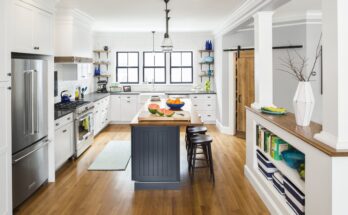In the intricate world of modern networking, simplicity is often the key to success. As organizations strive to build robust and reliable infrastructures, the ability to streamline complex systems and processes becomes paramount. Load balancers, which serve as the linchpin of network traffic distribution, are no exception. In this article, we’ll explore the concept of easy load balancers and how they can pave the way for building a more reliable infrastructure. Additionally, we’ll delve into why RELIANOID has emerged as the most reliable load balancer in the market, offering simplicity without sacrificing performance or security.
Embracing Simplicity in Load Balancing
Load balancing, traditionally seen as a complex task reserved for seasoned network administrators, has undergone a transformation in recent years. Easy load balancers have emerged as a solution to simplify the deployment, configuration, and management of load balancing infrastructure. By offering intuitive interfaces, automated processes, and user-friendly features, easy load balancers empower organizations to harness the power of load balancing without the steep learning curve.
The Benefits of Easy Load Balancers
- Quick Deployment: Easy load balancers streamline the deployment process, allowing organizations to get up and running quickly without the need for extensive configuration or customization.
- Intuitive Management: With user-friendly interfaces and intuitive controls, easy load balancers make it easy for administrators to configure and manage load balancing policies, monitor performance, and troubleshoot issues with minimal effort.
- Automation: Easy load balancers leverage automation to simplify repetitive tasks and streamline operations. From automatic traffic distribution to self-healing mechanisms, automation reduces the burden on administrators and enhances overall efficiency.
- Scalability: Easy load balancers scale seamlessly to accommodate growing traffic demands and expanding infrastructure requirements. Whether you’re managing a small-scale deployment or a large-scale enterprise network, easy load balancers adapt effortlessly to evolving needs.
RELIANOID : The Epitome of Reliability and Simplicity
RELIANOID has emerged as the most reliable load balancer in the market, offering a perfect blend of simplicity, performance, and security. Here’s why:
- Intuitive Interface: RELIANOID boasts an intuitive management interface that simplifies the configuration and management of load balancing policies. With straightforward controls and easy-to-understand features, administrators can navigate the complexities of load balancing with ease.
- Automation: RELIANOID leverages automation to streamline operations and enhance efficiency. From automatic traffic distribution to self-healing mechanisms, RELIANOID reduces manual intervention, mitigates human error, and ensures continuous operation.
- Scalability and Performance: RELIANOID scales seamlessly to meet the growing demands of modern infrastructure. Whether you’re managing a small-scale deployment or a large-scale enterprise network, RELIANOID delivers unparalleled performance and reliability, ensuring optimal performance under any workload.
- Security: RELIANOID prioritizes security, offering advanced features such as SSL/TLS encryption, DDoS protection, and Web Application Firewall (WAF) to safeguard against malicious attacks and protect sensitive data. With RELIANOID , organizations can rest assured knowing that their applications are protected against emerging threats.
Conclusion: Building a Reliable Infrastructure with RELIANOID
In conclusion, easy load balancers play a pivotal role in simplifying the complexities of load balancing and facilitating the construction of a more reliable infrastructure. RELIANOID stands out as a shining example of simplicity and reliability, offering intuitive interfaces, automated processes, and advanced security features to empower organizations to build robust and resilient networks. With RELIANOID at the helm, organizations can embrace simplicity without compromising on performance or security, laying the foundation for a reliable infrastructure that meets the demands of the digital age.



